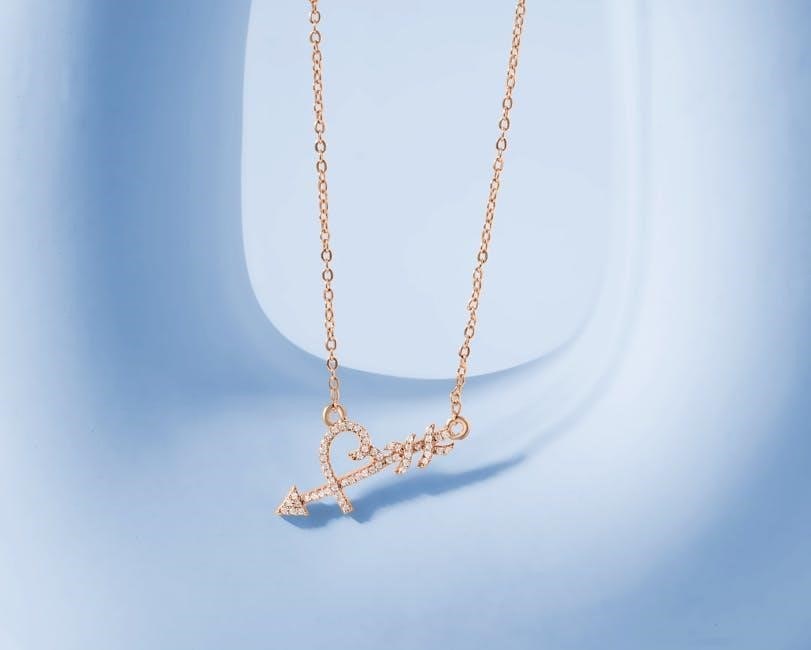Title and Author
The Diamond Necklace‚ by Guy de Maupassant‚ is a renowned short story first published in 1884. Its original French title is La Parure‚ meaning “The Jewelry.”
1.1 The Diamond Necklace by Guy de Maupassant
The Diamond Necklace‚ written by French author Guy de Maupassant in 1884‚ is a timeless short story exploring themes of desire‚ deception‚ and social class. It revolves around Mathilde Loisel‚ a young woman consumed by her longing for luxury‚ who borrows a diamond necklace for a high-society ball. The story’s tragic twist and ironic ending highlight Maupassant’s mastery of realistic narrative and his critique of societal aspirations. The tale remains a classic in world literature.
1.2 Background of the Author
Guy de Maupassant (1850–1893) was a prominent French writer‚ often regarded as one of the greatest short story writers of all time. Born in Normandy‚ France‚ he came from a middle-class family. Maupassant’s literary career flourished under the mentorship of Gustave Flaubert‚ who recognized his talent. His works‚ including The Diamond Necklace‚ reflect his pessimistic outlook on life‚ focusing on human nature and societal flaws. His writing often carried a sense of realism‚ leaving lasting impacts on literature.
1.3 Publication and Popularity
The Diamond Necklace was first published in 1884 in the French newspaper Le Gaulois. The story gained immediate popularity for its gripping narrative and unexpected twist. Its success led to translations into multiple languages‚ cementing its place in world literature. The tale’s timeless themes of ambition and deception continue to captivate readers‚ making it a classic studied and admired globally. Its enduring popularity has also led to various adaptations and interpretations over the years.

Plot Summary
The Diamond Necklace tells the story of Mathilde Loisel‚ a young woman yearning for luxury‚ who borrows a diamond necklace for a ball‚ loses it‚ and faces a decade of hardship to replace it.
Mathilde Loisel‚ the protagonist‚ is a young‚ beautiful woman trapped in a middle-class life. She is dissatisfied with her modest existence‚ yearning for luxury and admiration. Born into a family of clerks‚ she lacks a dowry or connections‚ compelling her to marry a low-ranking clerk. Her discontent fuels her desire for wealth and status‚ driving her to borrow a diamond necklace for a ministerial ball‚ setting off a chain of events that alters her life.
2.2 The Borrowing of the Diamond Necklace
Mathilde Loisel borrows the diamond necklace from her wealthy friend‚ Madame Jeanne Forestier‚ to wear at the ministerial ball. Envious of Forestier’s luxury‚ Mathilde is captivated by the necklace’s brilliance and reluctantly decides to take it. She tries it on‚ admiring her reflection‚ and hesitates before returning it. This moment of vanity leads her to ask for the necklace‚ unaware of the life-altering consequences this decision will bring.
2.3 The Loss of the Necklace
After a magical evening at the ministerial ball‚ Mathilde returns home to discover the diamond necklace is missing. Frantic‚ she and her husband search but find nothing. The loss triggers panic‚ as they realize the necklace’s immense value and their inability to replace it. This marks the beginning of their downward spiral into debt and hardship‚ as they struggle to conceal their mistake from Madame Forestier.
2.4 The Aftermath and Repayment
The loss of the necklace plunges the Loisels into a desperate struggle. They borrow heavily‚ securing loans from ruthless moneylenders at exorbitant rates. For ten years‚ they endure a life of poverty and drudgery‚ sacrificing comfort and dignity to repay the debt. Their once-promising future fades as they toil tirelessly‚ only to discover later that the necklace was a fake‚ rendering their sacrifices tragically futile.
Characters
The story revolves around Madame Mathilde Loisel‚ a woman yearning for luxury‚ her husband Monsieur Loisel‚ and Madame Jeanne Forestier‚ her wealthy friend who lends the necklace.
3.1 Madame Mathilde Loisel
Madame Mathilde Loisel is the protagonist‚ a young‚ beautiful woman trapped in a middle-class life. Born into a family of clerks‚ she yearns for luxury and status. Her relentless desire for wealth and social standing drives the story’s tragic events. Despite her modest circumstances‚ she craves the finer things in life‚ leading her to borrow the diamond necklace that becomes the catalyst for her family’s downfall. Her vanity and dissatisfaction with her simple life are central to her character.
3.2 Monsieur Loisel
Monsieur Loisel is Mathilde’s husband‚ a humble clerk in the Ministry of Education‚ content with his modest life. He works tirelessly to provide for his family‚ often sacrificing his own desires to ensure their well-being. Unlike Mathilde‚ he is pragmatic and accepting of their social status. His patience and loyalty are evident as he supports Mathilde’s aspirations‚ even when they lead to financial ruin. His character contrasts sharply with Mathilde’s‚ highlighting themes of contentment versus ambition.
3.3 Madame Jeanne Forestier
Madame Jeanne Forestier is a wealthy and influential friend of Mathilde Loisel‚ embodying the luxury and status Mathilde envies. She lends Mathilde the diamond necklace for the ball‚ showcasing her generosity and social standing. However‚ her chilly demeanor and lack of empathy toward Mathilde’s plight reveal her detachment from those less fortunate. Her character serves as a contrast to Mathilde’s struggles‚ highlighting the social divide and the superficiality of upper-class relationships in 19th-century French society.

Themes
The story explores themes of wealth and luxury‚ deception’s consequences‚ ironic fate‚ and social class‚ highlighting the human struggle with vanity and the unpredictability of life’s outcomes.
4.1 The Desire for Wealth and Luxury
4.2 The Consequences of Deception
The story illustrates the devastating repercussions of deception. Mathilde’s decision to deceive her friend by replacing the lost necklace with a fake one leads to a decade of financial struggle. This act of dishonesty‚ though initially sparing her pride‚ results in immense personal and marital sacrifice. Maupassant uses this theme to emphasize the moral and emotional toll of dishonesty‚ showcasing how lies can unravel lives and perpetuate suffering‚ ultimately teaching a harsh lesson about integrity and transparency.
4.3 The Irony of Fate
The story highlights the ironic twist of fate that befalls Mathilde. Her desire for luxury leads her to borrow the necklace‚ which she loses‚ sparking a decade of hardship to repay the debt. The ultimate irony lies in the revelation that the necklace was a fake‚ rendering their sacrifices futile. This tragic turn of events underscores the unpredictability of life and the often-cruel nature of fate‚ leaving readers with a profound sense of moral reflection and regret.
4.4 Social Class and Status
Maupassant explores the rigid social stratification of 19th-century France through Mathilde’s struggles. Her marriage to a low-ranking clerk traps her in a life far below her aspirations. The story reflects the societal pressures that equate worth with material possessions and status‚ highlighting the limitations imposed by birth and economic standing. Mathilde’s relentless pursuit of luxury mirrors the broader societal obsession with class‚ underscoring the futility of striving for an unattainable social position in a rigidly stratified world.
Symbolism
The Diamond Necklace symbolizes wealth‚ luxury‚ and societal status‚ reflecting Mathilde’s unattainable aspirations. The ball represents her fleeting moment of glory‚ while the setting mirrors her social reality.
5.1 The Diamond Necklace as a Symbol of Wealth
The diamond necklace embodies the opulence and extravagance Mathilde longs for‚ symbolizing the wealth and status she feels deprived of. Its brilliance and value represent the luxury she desires but cannot afford‚ making it a potent symbol of her unfulfilled aspirations. The necklace’s allure captivates her‚ driving her to borrow it‚ unaware of the burdens it will bring. It signifies the societal obsession with material wealth and the illusion of upward mobility.
5.2 The Ball as a Symbol of Aspiration
The ball represents Mathilde’s aspirations for a luxurious life‚ symbolizing her desire to transcend her humble existence. It serves as a fleeting opportunity for her to experience the elegance and sophistication she covets‚ fueling her determination to borrow the necklace. The ball’s grandeur contrasts sharply with her ordinary life‚ highlighting her yearning for social elevation and the temporary escape it offers from her mundane reality.
5.3 The Setting as a Reflection of Social Reality
The story’s setting vividly reflects the social stratification of 19th-century France. Mathilde’s modest home‚ with its worn furniture and dull surroundings‚ contrasts sharply with the opulence of the ministerial ball and Madame Forestier’s luxurious possessions. This juxtaposition underscores the stark class divisions and the struggles of middle-class life. The setting serves as a mirror to the societal realities of the time‚ emphasizing the gap between aspiration and actuality in Mathilde’s life.

Key Events
The story revolves around the ministerial ball invitation‚ Mathilde borrowing the necklace‚ its loss‚ and the arduous ten-year repayment journey‚ shaping the narrative’s tragic trajectory.
6.1 The Ministerial Ball Invitation
The ministerial ball invitation sparks Mathilde’s desire to attend‚ pushing her to borrow a diamond necklace from Madame Forestier. This event sets the story’s tragic chain of events in motion‚ highlighting Mathilde’s obsession with wealth and status. The invitation symbolizes her aspirations and serves as the catalyst for the necklace’s central role in her life-altering decisions.
6.2 The Borrowing and Wearing of the Necklace
Mathilde borrows a diamond necklace from Madame Forestier to wear to the ministerial ball‚ symbolizing her desire to fit into high society. She is captivated by the necklace’s beauty and feels it elevates her status. At the ball‚ she shines‚ embodying the elegance and luxury she has always craved. The necklace becomes a central symbol of her aspirations and the catalyst for the story’s tragic events.
6.3 The Loss and Replacement of the Necklace
After a night of celebration‚ Mathilde realizes the necklace is missing. Frantic‚ she and her husband search but cannot find it. To avoid disgrace‚ they replace it with an identical one‚ incurring a massive debt. This act of deception sets off a chain of sacrifices and hardships‚ altering their lives forever. The loss of the necklace marks the beginning of their downward spiral into poverty and regret.
6.4 The Ten-Year Repayment Struggle
After replacing the necklace‚ the Loisels endure a decade of financial hardship. They borrow heavily‚ accumulating ruinous debt. Monsieur Loisel secures loans from usurers and acquaintances‚ while Mathilde sacrifices her comfort and beauty‚ working tirelessly to repay the debts. Their life becomes one of relentless labor and austerity‚ as they struggle to rebuild their financial stability and regain their former status‚ though their experiences leave lasting scars.

Moral and Lessons
The story emphasizes the dangers of vanity‚ greed‚ and deception‚ highlighting the importance of honesty and contentment with one’s circumstances to avoid unnecessary suffering.
7.1 The Dangers of Vanity and Envy
Mathilde Loisel’s insatiable desire for luxury and envy of others’ wealth lead to her downfall. Her vanity blinds her to the value of her modest life‚ driving her to make choices with devastating consequences. The story serves as a cautionary tale about the destructive nature of envy and the importance of appreciating what one has‚ rather than endlessly pursuing material possessions and social status.
7.2 The Importance of Honesty and Integrity
The story underscores the moral lesson that honesty is always the best policy. Mathilde’s decision to deceive Madame Forestier about losing the necklace leads to a decade of financial hardship. Her dishonesty not only damages her reputation but also strains her relationship with her husband. The tale highlights the consequences of hiding the truth and the importance of integrity‚ showing how transparency could have prevented her downfall and preserved her dignity.
7.3 The Unpredictability of Life
The story illustrates the unpredictability of life through Mathilde’s unexpected misfortune. Her desire for luxury leads to a chain of events she could never have foreseen. The loss of the necklace and the subsequent years of struggle emphasize how life can take unforeseen turns. This theme reminds readers to appreciate what they have and prepares them for life’s uncertainties‚ as even the smallest decisions can lead to profound consequences.
Literary Style
Guy de Maupassant’s realistic and pessimistic style shines in The Diamond Necklace. His use of irony and tragic endings creates a vivid portrayal of life’s harsh realities‚ leaving a lasting impact on readers.

8.1 Realism in Maupassant’s Writing
Guy de Maupassant’s writing in The Diamond Necklace is marked by realism‚ capturing the social and economic struggles of 19th-century France. His detailed descriptions of settings‚ like the Loisel’s modest home‚ reflect the harsh realities of middle-class life. The story avoids romanticism‚ instead focusing on the gritty truths of poverty and ambition. Maupassant’s realistic portrayal of characters‚ such as Mathilde’s dissatisfaction and her husband’s resignation‚ underscores the struggles of ordinary people‚ making the narrative relatable and poignant.
8.2 The Use of Irony and Twist Endings
Guy de Maupassant masterfully employs irony and a twist ending in The Diamond Necklace. The story’s climax reveals the necklace was fake‚ a shocking truth that underscores the Loisel’s decade-long suffering. This ironic twist highlights Maupassant’s skill in crafting narratives that surprise and provoke reflection. The ending leaves readers contemplating the futility of ambition and the unpredictability of life‚ reinforcing the story’s timeless appeal and moral depth.
8.3 Pessimism and Tragic Outcomes
Guy de Maupassant’s The Diamond Necklace embodies pessimism through its tragic outcome. Mathilde’s relentless pursuit of luxury leads to her downfall‚ leaving her in poverty and regret. The story’s bleak conclusion reflects Maupassant’s view of life as unforgiving and often cruel. This pessimistic tone underscores the futility of chasing material wealth and the inevitable consequences of one’s choices‚ leaving readers with a somber reflection on human ambition and societal pressures.

The Necklace’s Significance
The Diamond Necklace symbolizes the allure of wealth and status‚ driving the story’s tragic events. Its loss and repayment underscore themes of ambition‚ sacrifice‚ and societal pressures.
9.1 Cultural and Historical Context
Guy de Maupassant’s The Diamond Necklace reflects late 19th-century French society‚ where class divisions and materialism were prevalent. The story critiques the social aspirations of the middle class‚ particularly women‚ during the Third Republic. Madame Loisel’s struggle mirrors the societal pressures of the time‚ where appearances and status often overshadowed reality. The narrative highlights the rigid social hierarchy and the sacrifices made to climb it‚ offering a timeless commentary on human ambition and the cost of illusion.
9.2 The Necklace as a Central Plot Device
The diamond necklace is the pivotal element driving the story’s tragic progression. It symbolizes luxury and status‚ fueling Madame Loisel’s discontent and ambition. The necklace’s loss and costly replacement propel the plot‚ leading to a decade of financial hardship. Its return‚ revealed as a fake‚ underscores the irony of the Loisels’ sacrifices. This object serves as both a motivator and a catalyst‚ illustrating how material desires can alter lives irrevocably.
9.3 Universal Appeal and Timelessness
The story’s enduring popularity stems from its exploration of universal themes like ambition‚ greed‚ and social aspiration. The struggles of Madame Loisel resonate across cultures and generations‚ making the tale timeless. Its concise yet profound narrative continues to captivate readers‚ offering insights into human nature and societal pressures. The necklace’s symbolism transcends its historical context‚ ensuring the story’s relevance in modern discussions of class and materialism.
The PDF Version
The Diamond Necklace by Guy de Maupassant is widely available in PDF format‚ offering readers a convenient and accessible way to enjoy this timeless classic.
10.1 Availability and Accessibility
The Diamond Necklace by Guy de Maupassant is readily available in PDF format‚ free to download from various online platforms. Its digital form ensures accessibility across devices‚ making it easy for readers worldwide to enjoy this classic tale. The PDF version preserves the original narrative’s integrity‚ offering a seamless reading experience for both casual readers and scholars alike.
10.2 Features of the PDF Format
The PDF version of The Diamond Necklace offers a clean‚ readable layout with preserved formatting. It includes the full text of the story‚ ensuring that Maupassant’s original narrative and stylistic elements are maintained. The file is lightweight‚ making it easy to download and share. Enhanced features like bookmarking and search functionality improve navigation‚ allowing readers to quickly locate specific sections or themes within the story.
10.3 Benefits of Reading the PDF
Reading The Diamond Necklace in PDF format provides a seamless and immersive experience. The portable file allows access on various devices‚ making it ideal for reading anywhere. The clear typography and consistent formatting ensure readability‚ while the ability to highlight and annotate text aids in deeper understanding. Additionally‚ the PDF preserves the story’s original structure‚ enabling readers to fully appreciate Maupassant’s literary style and the narrative’s emotional depth. This format is both convenient and engaging for modern readers.

Relevance Today
The Diamond Necklace remains timeless‚ exploring universal themes of desire‚ social status‚ and consequences‚ continuing to resonate with modern readers through its relatable human struggles and moral lessons.
11.1 Modern Interpretations and Adaptations
The Diamond Necklace has been adapted into films‚ stage plays‚ and modern literature‚ exploring themes of desire and social status. Its timeless narrative resonates in contemporary contexts‚ often highlighting the consequences of materialism. Modern interpretations frequently emphasize the psychological and societal pressures faced by characters‚ making the story a timeless reflection of human aspiration and the pursuit of luxury. Its versatility allows it to transcend cultural and temporal boundaries‚ remaining a powerful allegory for modern audiences. The story’s moral lessons continue to inspire new adaptations and reflections.
11.2 The Story’s Impact on Readers
The Diamond Necklace profoundly impacts readers by evoking empathy and reflection. Mathilde’s tragic journey highlights the consequences of vanity and deceit‚ prompting readers to question their own values. The story’s emotional depth and moral lessons leave a lasting impression‚ encouraging introspection about materialism and social ambition. Its relatable themes of aspiration and struggle make it a timeless tale that challenges readers to evaluate their priorities and the true cost of luxury. The story’s emotional resonance lingers long after reading.
11.3 Why The Diamond Necklace Remains Popular
The Diamond Necklace endures due to its universal themes and timeless appeal. Its exploration of human nature‚ ambition‚ and the consequences of deception resonates across generations. The story’s concise yet powerful narrative‚ coupled with its unexpected twist‚ captivates readers. Additionally‚ its accessibility as a PDF and its inclusion in educational curricula ensure its continued relevance. The relatable struggle of Mathilde Loisel makes the tale a classic‚ maintaining its popularity in modern times. Its enduring relevance ensures its place in literature.
The Diamond Necklace by Guy de Maupassant remains a timeless tale of ambition‚ deception‚ and fate‚ offering moral lessons and a gripping narrative that captivates readers universally.
12.1 Summary of Key Points
The Diamond Necklace by Guy de Maupassant revolves around Mathilde Loisel‚ a woman consumed by her desire for wealth and luxury. The story unfolds as she borrows a diamond necklace for a ball‚ loses it‚ and spends years repaying the debt. The tragic irony of the necklace being fake adds depth to the narrative‚ emphasizing themes of deception‚ social class‚ and the unpredictability of life. The tale serves as a moral lesson on the dangers of vanity and the importance of honesty‚ resonating with readers universally.
12.2 Final Thoughts on the Story’s Message
The Diamond Necklace delivers a poignant message about the consequences of chasing illusions of wealth and status. Mathilde’s tragic journey highlights the destructive nature of envy and materialism. The story underscores the importance of appreciating one’s circumstances and being truthful. Maupassant’s masterful use of irony leaves readers reflecting on life’s unpredictability and the futility of superficial aspirations‚ making the tale timeless and universally relatable in its critique of human vanity and societal pressures.
